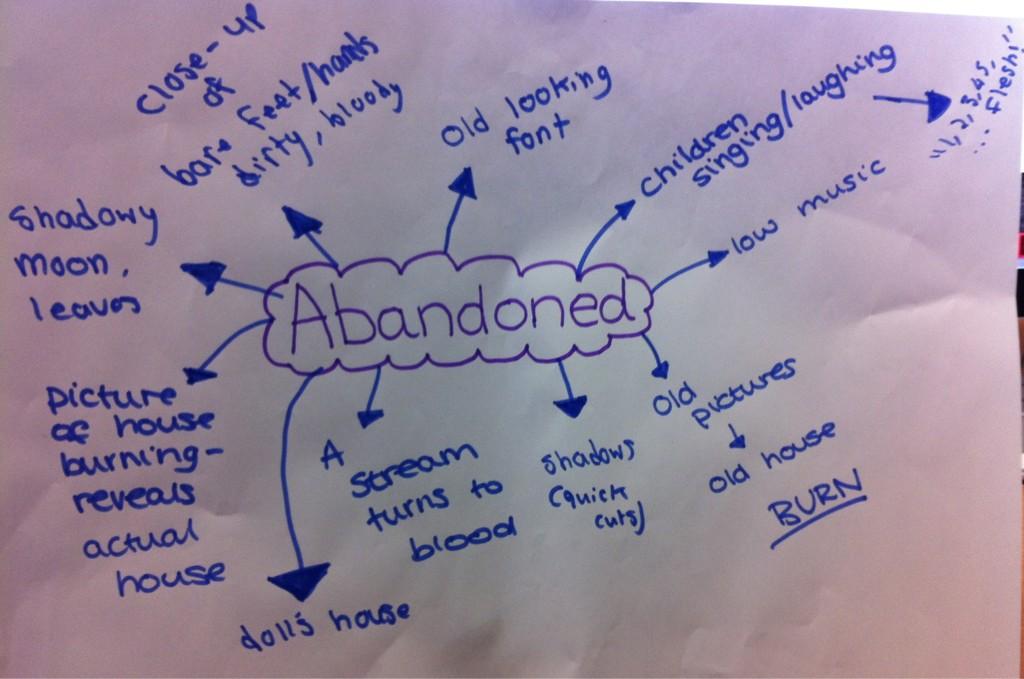We then see a mid shot of a man who is has blood pouring from his mouth,showing that this film will be violent and gory, this is backed up through the whole title sequence as some form of blood or attack is always preset. This also connotes that the film is a horror genre as the 'man' looks like a zombie and blood is also a typical convention of horror films.
There are several shots throughout the sequence that show ordinary workers running from the zombies.One shot is of a woman running whilst spilling her drink in the air. Her expression shows sheer horror as she is clearly fearing for her life as a potentially bloodthirsty zombie is trying to attack her.
One man that is being chased is holding a briefcase, this shows the audience that the zombies do not care for the people that they are going after, and that they are just after anyone they can see.Another zombie is in her wedding dress, this could foreshadow that the zombie formation could happen at any time, and that these zombies would have been normal people living normal lives, which also shows that their may be some virus that is effecting them in this way.
Although there are clear links to the horror genre in this title
sequence there are also comedic elements as well as several binary oppositions.
One shot its shown of a zombie stripper chasing after a well
dressed
business man, the fact that the woman is almost naked add to
the comedy of this sequence. Also, usually it's men that are after strippers,
yet this time it has been flipped around. This could also show that the women
in this film may possibly be the stronger gender as several zombie women are
shown throughout the sequence.
One man is holding a sign reading 'The end is near' this could foreshadow that the end is near due to the zombies and that the zombie apocalypse may have possibly been predicted to end the world.
The whole of the sequence is in slow motion, this could be to show the typical stereotype of a zombie, that they are slow and can be out run. Although the fact that both the zombies and humans are in the same slow shot could foreshadow that the humans will not be able to escape the zombies and they could possibly be at the same speed.
There are also shots of Zombies attacking policemen and firemen.This shows that the zombies have no care for the people that they are attacking and it especially shows that they do not show and respect for authoritative figures.
At the end of the title sequence there is a shot of a man with a machine gun. This foreshadows that the uninfected people may take a stand and attempt to rid everywhere of the zombies in order for them to be able to survive.






